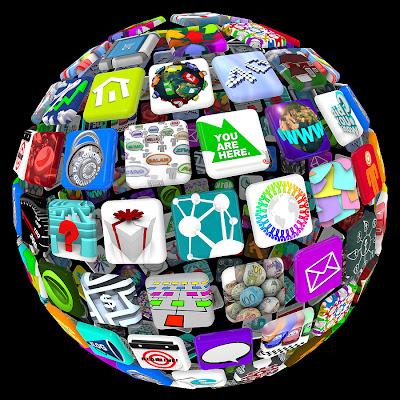By Kim Cardle
Mobile applications development is similar to programming computers to perform tasks but on a smaller scale. However, many apps today do more than what computers can, for example, utilizing GPS to deliver locations and allowing branding solutions for numerous businesses.
With more people using smartphones for work, recreation and communication, there's a race to develop apps to make smartphones even smarter. For example, built-in (native) iPhone apps are enough to get some users by as they consist of maps, personal assistants, internet connectivity and a whole lot more. Apps available in the App Store comprise of additional applications to enhance utility functions, allow gaming, download of entertainment etc. But since iPhones are capable of processing so many more apps, developers are in demand by clients who need to market products and services on the same platform.
This demand has created job avenues for developers and designers alike while giving clients an opening to stay connected to potential customers. Smartphone manufacturers also profit as users enjoy what the phones have to offer and facilitate a demand, creating a win-win situation for all.
Applications are divided into services they provide. Clients connect with users through them by initiating projects that can be delivered through these channels. Take a look at what they are.
Multimedia apps
More than just a channel for entertainment, multimedia tools permit the sharing of videos, images and music between a phone user and his contacts. These apps tend to have many followers because they're easy to use and allow downloading and uploading of high resolution content. Most have built-in editing tools as well to completely change or enhance content.
GPS guides
Printed maps are becoming obsolete for many because they can't be updated continuously. They also don't contain sites immediate to a person's location. For instance, you're on a certain street and want to know where the nearest restaurant is. With an app, you'll get a list of places within a certain radius in seconds. The maps are pretty accurate and despite having to be periodically updated by the maker, still work faster than printed varieties.
Social networking
Almost every smartphone user is a member of a social networking website. Connecting to these sites through a computer or a notebook is obviously possible but most prefer carrying smartphones than larger gadgets. Staying connected with family and peers is important to many and apps allow this.
Branding
When an app is made by or made for a company, that company's brand image is enhanced and acts as a reminder whenever a phone user uses it. It's like having a banner with a customer at all times. Small wonder that so many companies are taking the mobile app route and optimizing applications to fit smartphones.
Lifestyle
Lifestyle apps are replacements for books and magazines because you can take them with you in a small package. Let's say you're waiting for a flight and have nothing to do for the next hour. You could read a book or browse the airport stores but for how long? Lifestyle apps are varied with reference books, information on practically any subject, how-to guides, cookbooks, comics, novels. You name it and you'll find it. Some apps also connect you with like-minded people from across the world by integrating with social networking sites.











0 comments:
Post a Comment